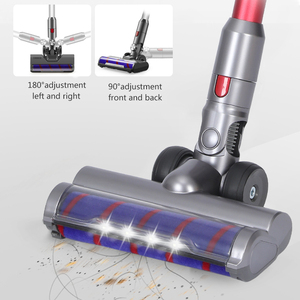(7489 products available)



































































































































































A 4 cyclone separator is a machine that divides dust particles from gas streams using four individual cyclones. By subjecting the incoming gas stream to centrifugal forces, these forces push the heavier particles toward the walls of the cyclone, thereby separating them from the gas. Normally after the walls, the particles drop down into a hopper while the cleansed gas exits through the outlet.
Due to the effectiveness of cyclone separators, manufacturers have come up with different designs to serve various industries. Some of them include:
The specifications for 4 cyclone separators and their maintenance requirements are as follows.
Materials to Separate:
Four-cyclones separators can process a range of materials, including both dry solids and powders. Every cyclone has an inlet shape that enables various products to enter it. Business buyers should know that some very wet materials, such as sludge, cannot go into a four-cyclone separator.
Industries and Applications:
In some industries, a four-cyclone separator is called a four-way classifier. It is used in industries like food processing, chemicals, mining, and pharmaceuticals. In food production, it separates flour, starch, and sugar into fine food products. In the chemical industry, it separates calcium carbonate, carbon black, bentonite, and pigment. Classifiers in the mining industry use the four-cyclone separator to separate ore, coal, and cement. In the pharmaceutical industry, it classifies chemicals, active herbal ingredients, and vitamins.
Grain Sizes and Classifications:
A four-cyclone classifier can separate materials based on their grain sizes. Light particles are fine fractions, while heavier ones are coarse fractions. Each four-cyclone separator is tuned to separate specific grain sizes. For exact settings, buyers need to know the model of their cyclone classifier and follow the manufacturer's instructions to tune it for the required grain size separation.
Air Flow and Power:
The air flowing through a separator works with its classifiers to clean and separate materials. It also carries the final products to the outlet. Different models and sizes of cyclone separators have varying air flows. The classifier's motor power also differs among models. Buyers should think about how much air flow and motor power they need for their work when selecting a cyclone separator.
A four-cyclone separator needs regular maintenance and servicing. Usually, the training and guidance of the supplier or maker are enough. Most of the separator's moving parts wear and tear are minor. Regular inspections can prevent small parts from becoming faulty or damaged.
Some parts of the classifier may need lubrication on occasion. Buyers should always think about grease's impact on food grades and cleaning purposes. For further information, please refer to the guidance provided by the manufacturer.
A washing plant or food processing facility needs to develop a documented preventive maintenance program. This covers tasks such as inspecting, washing, and lubricating components of the four-cyclone separator system. A documented program helps businesses establish a routine, and adherence to the program ensures efficiency and hygiene standards are always upheld.
Many industries use a four-cyclone separator because they are versatile air cleaning devices. Here are a few examples:
Agriculture and Farming
Grain separators are widely used in the agriculture and farming industry. They help separate different types of grains, such as corn, wheat, rice, and soybean. By using grain separators, farmers and grain processors can efficiently separate quality grains from partial contaminants.
Food Processing
Food industries use separator machines to separate food products like spices, sugar, flour, cocoa, and coffee beans. Separator machines enhance the quality and purity of final food products.
Cement & Construction
Cement producers utilize air cyclone separators for cement classification. The separator machines separate cement particles based on their sizes. This helps in optimizing the cement milling process and ensuring proper distribution of cement.
Plastic Recycling
A four cyclone separator can efficiently separate contaminants such as labels, caps, and other non-plastic materials in the recycling process. Air separators are valuable tools for improving the quality of recycled plastic materials.
Electronics
An air cyclone separator is valuable in the electronics industry for separating electronic components and materials. Electronics manufacturers can improve the purity and yield of electronic materials by utilizing cyclone separators.
Textiles
Cyclone separators are used in the textile industry to separate fiber, lint, and dust generated during textile production and processing. By using cyclone separators, textile manufacturers can reduce equipment contamination and maintain product quality.
Mining and Minerals
Mineral processing operations often use air cyclone separators for size classification and separation of minerals. The cyclone separators can handle large volumes and separate various types of minerals, such as coal, gold, copper, iron ore, and more.
When choosing a 4 cyclone for business, some factors are essential to consider. Among them are the size and capacity, fuel source, durability and build quality, comfort features, and the value for money.
Q1: What sorts of materials can a 4 cyclone extractor handle?
A1: Multi-station 4 cyclones are mainly made of steel, stainless steel, and carbon steel, especially for hardwood. The dust can be recycled and separated by the bag or other cleaning means.
Q2: What are the air flow rates for a 4 cyclone dust extractor?
A2: 4 cyclone dust collectors usually have different air flow rates (CFM) based on their motors and fan wheels. The air flow rates may vary from 1,000 CFM to 8,000 CFM for collectors with 4 pipes.
Q3: Are 4 cyclone dust collectors loud?
A3: Yes, they are a little bit noisy. The 4 cyclone machine's noise will depend on the motor size, the fan speed, and whether there is any noise reduction feature. However, they offer a great incentive to keep the shop clean, so the noise is worth it.